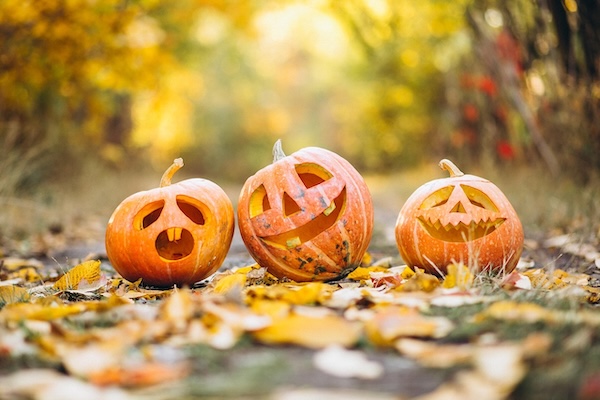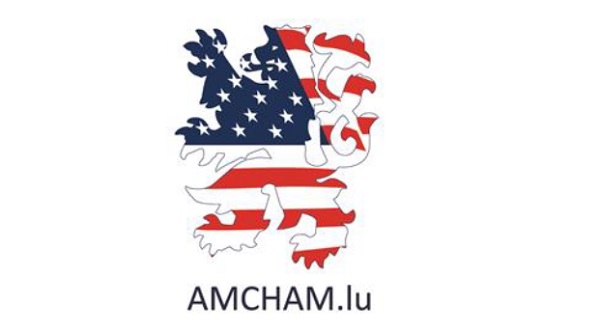 Credit: Pixabay
Credit: Pixabay
Late October always carries the anticipation of its most awaited celebration, Hallowe'en, which certainly does not pass unnoticed in the Grand Duchy.
Our first family experience of Hallowe'en came in 2024. My then six-year-old son already knew what the night was about, or rather, what it was really about: collecting sweets, and he had been counting down the days. His costume choice was clear from the start, a skeleton. Luckily, it has served us for two seasons in a row.
That is, of course, not counting the school celebrations my wife and I remember from the early 2000s in Ukraine, when Hallowe'en was still something of a novelty, introduced mainly through English lessons and student events.
We happened to be in Colmar-Berg that year, where we spent the evening celebrating. No, we were not invited to the Grand Duke's residence at Berg Castle, but the neighbourhood around it was alive with cobwebs, lanterns and pumpkins. It was easy to tell which houses were "Trick or Treat"-friendly, delighting excited children and amused parents alike.
That said, we did not skip those without decorations either. At one house, where a dog barked ferociously behind the door, we were rewarded not with a few sweets but with a half-kilo bag, perhaps for our bravery. Another cheerful host was taking photos of every little visitor "to make sure they don't come twice," as she explained.
All in all, it was a truly delightful evening, and the sweets lasted well into November.
This growing enthusiasm for Hallowe'en in Luxembourg naturally raises the question of from where the tradition comes and how it evolved into the celebration we know today.
Long before pumpkins and costumes appeared, there was Samhain, the ancient Celtic festival marking the end of the harvest and the beginning of winter, celebrated in Ireland. People believed that during this time, the boundary between the living and the dead became blurred, and they lit bonfires to ward off spirits. With the spread of Christianity, Samhain was gradually merged with All Hallows' Eve, the night before All Saints' Day, and over time the name was shortened to Hallowe'en.
In the 20th century, the United States adopted and transformed this ancient observance into a modern and highly commercialised holiday centred around community gatherings, costumes and confectionery. By the mid-20th century, "Trick or Treating" had become a familiar custom across American neighbourhoods, and from the 1980s onwards, Hallowe'en had entered global popular culture through film, television and retail marketing.
Today, Hallowe'en represents a significant economic and cultural event. According to the National Retail Federation (NRF), consumers in the United States spent more than 12.2 billion dollars on Hallowe'en-related products in 2024. In Europe, the celebration has also gained traction: a YouGov survey indicates that over 40% of Europeans now take part in Hallowe'en activities, from decorating their homes to attending themed events.
Digital platforms and entertainment media have further accelerated this trend. Social media challenges, Netflix series and Disney characters have helped spread Hallowe'en imagery worldwide, adapting it to local contexts and tastes. What began as a seasonal ritual in the Celtic world has evolved into a shared global occasion blending folklore, commerce and creativity.
With so many international residents, it is perhaps no surprise that Hallowe'en has found fertile ground in Luxembourg. In a country where communities mix dozens of cultures and languages, traditions travel easily, and this one seems to have taken hold quite naturally in recent years.
Even though we are only halfway through October, signs of the season are already everywhere. One of our neighbours has a two-metre tall skeleton fixed to the door, while another has wrapped their entrance in yellow tape, resembling a crime scene. In my sons' school, a rather frightening mask now hangs in the hallway, setting the tone for the weeks ahead. The mood is building, house by house and classroom by classroom.
Many municipalities and associations across the country now organise family-friendly Hallowe'en events. The American Women's Club of Luxembourg (AWCL), for instance, hosts its popular Halloween Trunk or Treat event at Differdange Castle, where children go from car to car collecting sweets, and the Irish Embassy here is also hosting a children's Hallowe'en event. Other municipalities, especially in the north, mix international influences with long-standing local customs.
One such example is Trauliicht, the traditional carving of lanterns from beets or turnips, mainly in the northern Ardennes region. Once linked to All Saints' Day (1 November), the custom saw children carrying their lanterns through villages to light the way and ward off evil spirits. Today, towns such as Wiltz and Clervaux celebrate Trauliicht Weeks with lantern-making workshops, storytelling and bonfires, events that now stand alongside Hallowe'en festivities, giving the season a distinctly Luxembourgish touch.
In that sense, Hallowe'en here feels less like a foreign import and more like another shared tradition in a country used to blending cultures. Its decorations and costumes may come from abroad, but the warmth and community spirit they inspire are very much local.
If the United States has turned Hallowe'en into a billion-dollar industry, Europe has been catching up fast. In the United Kingdom, Hallowe'en spending reached an estimated £1.04 billion in 2023, up 13% year on year, according to Statista. Across continental Europe, consumer spending connected to Hallowe'en is expected to exceed €2 billion annually, reflecting a growing appetite for themed products and experiences.
Shops and supermarkets in Luxembourg mirror this trend, dedicating shelves to Hallowe'en themed items weeks in advance. Chains such as Delhaize, Cactus and Auchan have dedicated "Hallowe'en corners" stocked with sweets, costumes and home decor. Seasonal pop-up stores selling masks and party accessories have also become a familiar sight, particularly in shopping centres around the capital and Esch-Belval.
The hospitality sector has embraced the mood as well. Restaurants and cafés experiment with limited-edition desserts and cocktails, while bakeries introduce pumpkin-flavoured treats or chocolate "monster eyes". Bars and clubs frequently host themed nights, combining autumn menus with costume contests and charity collections.
Tourism and cultural venues are no exception. Several communes and family attractions host Halloween-themed evenings, from lantern walks and pumpkin trails to "spooky nights" for children. Parc Merveilleux has in recent years announced special twilight openings with costumed staff and storytelling sessions for families. Local museums and libraries sometimes join the fun with craft workshops or "haunted history" tours, offering a mix of education and entertainment.
What distinguishes Hallowe'en in Luxembourg is its ability to bring together local and international influences within a compact, community-oriented setting. Whether through a decorated café, a neighbourhood walk or a children's workshop, the celebration has quietly woven itself into the country's seasonal rhythm, not as a commercial invasion, but as a playful addition to its cultural landscape.
As we wait for our children's costumes for the 2025 edition to arrive - this time my son insists on being Death with a scythe - Hallowe'en continues to grow into something more than a night of sweets and disguises. It has become a moment of shared creativity and connection, reminding us that even in a small country like Luxembourg, traditions can cross borders, adapt and thrive. And perhaps that, more than anything, is the real magic of Hallowe'en.









